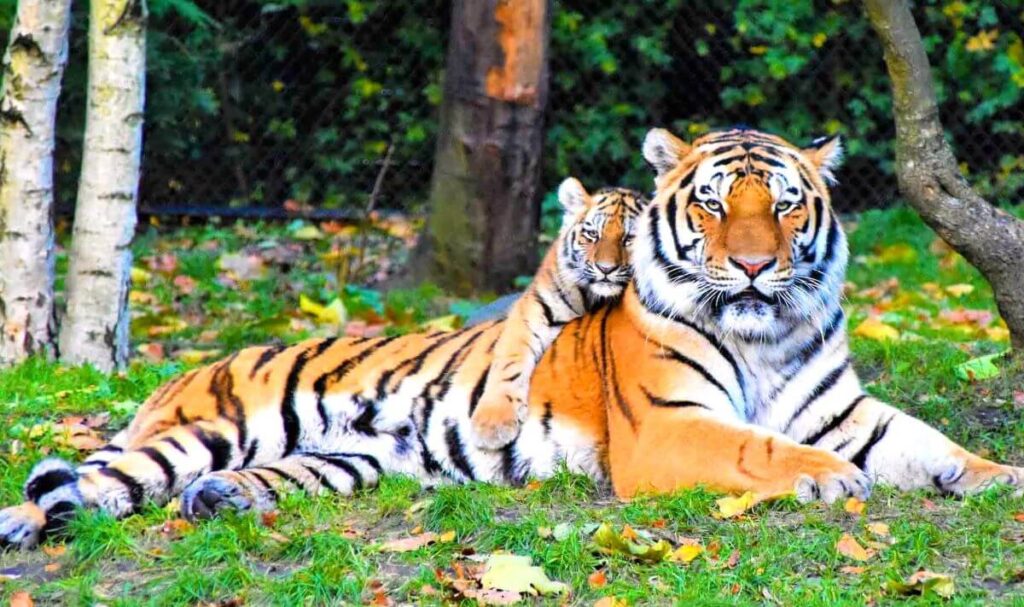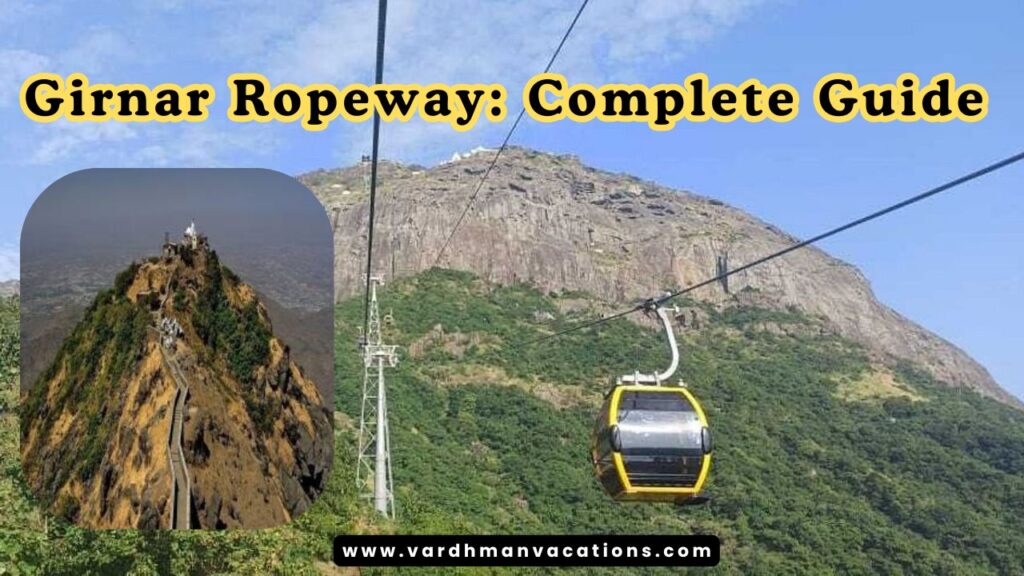India’s wilderness is alive with energy, spread across dense forests, vast grasslands, and ancient terrains. With over 100 national parks, India ranks among the world’s top destinations for witnessing wildlife in their natural habitat. These parks are more than just green getaways—they’re thriving ecosystems where you can experience wildlife up close and personal.
From passionate wildlife lovers and nature photographers to curious families and solo travelers, an increasing number of travelers are drawn to India’s rich biodiversity. A wildlife safari here is not just a journey—it’s an experience that connects you with nature and highlights the importance of conserving it. Picture a Royal Bengal Tiger moving silently through the morning mist, a one-horned rhinoceros grazing peacefully, or the rare sight of Asiatic lions roaming freely in the wild.
Beyond wildlife, these parks also offer a glimpse into India’s diverse local cultures, traditions, and cuisines, making your visit both enriching and memorable. It’s a perfect blend of adventure, education, and responsible travel.
But with so many spectacular parks, where do you begin? Here’s our handpicked guide to the best national parks in India for unforgettable wildlife sightings in 2025.
Best Time to Visit for Wildlife Sightings in India
India’s national parks offer unique wildlife experiences throughout the year, but the best time to spot animals in the wild is typically from October to June. This period offers the right mix of favorable weather and increased chances of sightings. Here’s a seasonal breakdown to help you plan the perfect safari:
November to February – Peak Safari Season
This is the most popular and rewarding time for wildlife safaris in India. The weather is cool and dry, and animals frequently gather near water sources, making them easier to spot. Wildlife activity is at its peak during early mornings, offering incredible photography opportunities and an estimated 70% higher chance of sightings. However, due to high demand, accommodations and safaris can get booked quickly, so plan in advance!
March to June – Best for Tiger Sightings
As temperatures rise and water becomes scarce, animals—especially tigers—tend to stay close to the remaining water holes. This is the prime time for tiger sightings, with parks like Bandhavgarh and Ranthambore reporting up to 80% chances of spotting these majestic cats in May and June. Be prepared for the heat, but the rewards are worth it.
July to September – Monsoon Magic
Although many national parks used to close during the monsoon, several now offer limited safari access. Zones like Jhirna in Corbett remain open year-round. During this season, the forest turns lush and vibrant, and wildlife displays unique behaviors not often seen in other months. While animal sightings may be less predictable, this is a great time for birdwatching, photography, and nature lovers who enjoy quieter parks and dramatic landscapes.
Top 5 National Parks in India for Wildlife Sightings
Here are the top 5 national parks in India that every nature lover and wildlife enthusiast should visit.
Bandhavgarh National Park, Madhya Pradesh
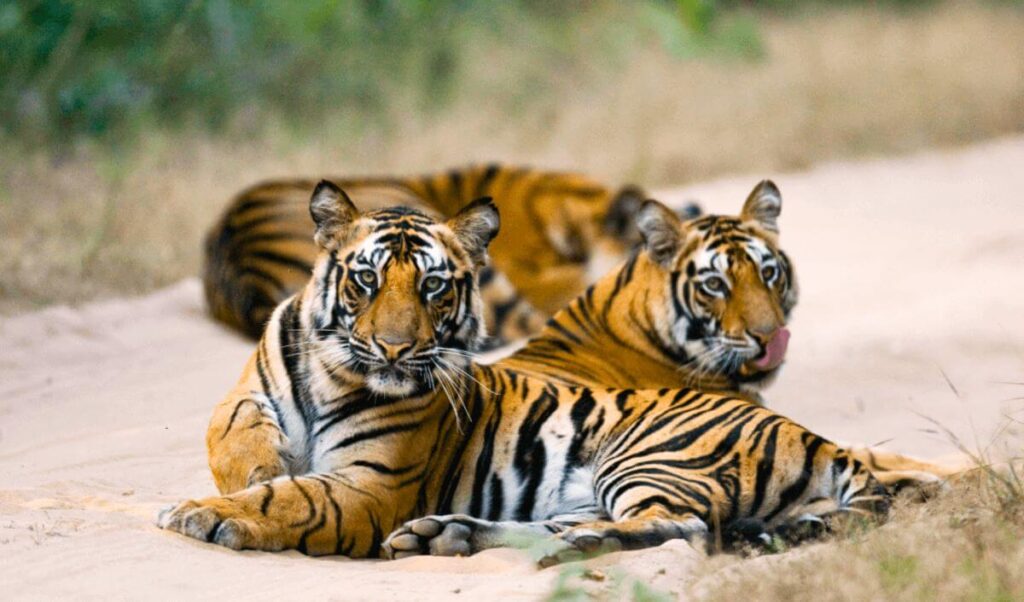
Nestled in the scenic Vindhya Hills of Madhya Pradesh, Bandhavgarh is not just a national park—it’s a land brimming with history, mythology, and wilderness. Known for having one of the highest densities of Bengal tigers in India, this park offers an exciting chance to witness these majestic cats in their natural habitat. But the magic of Bandhavgarh goes far beyond tigers.
The landscape is a rich blend of dense Sal forests, grassy meadows, and bamboo thickets, making every safari feel like you’re stepping into a real-life scene from The Jungle Book. Alongside the famed big cats, the park is home to leopards, sloth bears, sambar deer, langurs, and over 250 species of birds.
Bandhavgarh’s heritage is equally captivating. Steeped in legends from the Ramayana, and once ruled by the Maharajas of Rewa, the park is dotted with ancient caves, sculptures, and temples. Overlooking the forest from a hilltop, the Bandhavgarh Fort adds a majestic touch to the wild terrain and stands as a silent witness to centuries of history.
How to Reach Bandhavgarh National Park
- By Air: The nearest airport is Jabalpur Airport (approx. 200 km). Taxis are available for onward travel.
- By Train: The closest railway station is Umaria (approx. 35 km). From there, you can take a taxi or local transport to the park.
- By Road: Bandhavgarh is well-connected by road. Regular buses and taxis operate from nearby towns such as Umaria and Katni.
Safari Timings & Essential Information – Bandhavgarh National Park
Bandhavgarh National Park is open to visitors from 15th October to 30th June every year. The park is divided into several safari zones, with Tala, Magadhi, and Khitauli being the most popular for wildlife sightings.
Morning Safari
- 15th Oct – 15th Feb: 06:30 AM – 11:00 AM
- 16th Feb – 31st Mar: 06:00 AM – 11:00 AM
- 1st Apr – 30th Jun: 05:30 AM – 10:00 AM
Evening Safari
- 15th Oct – 15th Feb: 02:30 PM – 05:30 PM
- 16th Feb – 31st Mar: 03:00 PM – 06:00 PM
- 1st Apr – 30th Jun: 04:00 PM – 07:00 PM
Note: The park remains closed for evening safaris every Wednesday and on Holi.
Jim Corbett National Park, Uttarakhand
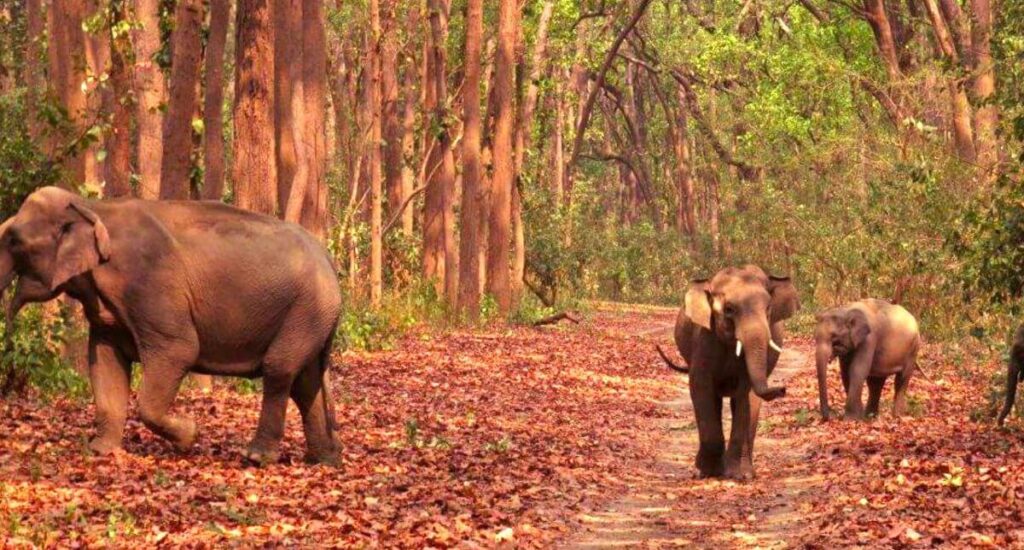
Established in 1936 as Hailey National Park, Jim Corbett is India’s first national park and a true pioneer in wildlife conservation. Spanning over 1,280 sq. km in the foothills of the Himalayas, the park boasts a stunning mix of rolling hills, river valleys, grasslands, and dense Sal forests. It offers one of the richest biodiversity zones in the country.
Named after Jim Corbett, the legendary hunter-turned-conservationist, the park is world-renowned for having the highest tiger density. It plays a crucial role in Project Tiger, making it a key destination for tiger lovers and wildlife enthusiasts alike. Beyond tigers, the park is home to elephants, leopards, sloth bears, crocodiles, otters, and over 600 species of birds.
Jim Corbett remains open year-round, with different safari zones available in different seasons. Each zone offers a unique terrain and a new wildlife viewing experience, making every safari here memorable.
How to Reach Jim Corbett National Park
- By Air: The nearest airport is Pantnagar Airport (approx. 80 km). Taxis and private transfers are easily available.
- By Train: The closest railway station is Ramnagar (approx. 12 km), well-connected to major North Indian cities.
- By Road: The park is easily accessible by road. Buses and taxis operate regularly from cities like Delhi (240 km), Nainital (65 km), and Dehradun.
Safari Timings & Key Information – Jim Corbett National Park
Jim Corbett National Park is divided into several tourism zones, each offering a different landscape and wildlife experience. The safari timings and opening months vary by zone. Each safari typically lasts around 3 hours and offers an exciting opportunity to explore the rich flora and fauna of the park.
Safari Zones & Opening Dates
- Bijrani Zone: Open from 15th October to 30th June
- Dhikala Zone: Open from 15th November to 15th June
- Jhirna, Garjiya & Dhela Zones: Open year-round
- Durgadevi & Sonanadi Zones: Open from 15th November to 15th June
Morning Safari
- 1st April – 15th October: Starts at 05:45 AM
- 15th October – 15th November and 16th February – 31st March: Starts at 06:00 AM
- 16th November – 15th February: Starts at 06:30 AM
Evening Safari
- 1st April – 15th October: Starts at 02:30 PM
- 15th October – 31st March: Starts at 01:30 PM
(Includes periods: 15th Oct – 15th Nov & 16th Feb – 31st Mar) - 16th November – 15th February: Starts at 01:30 PM
Note: Timings may vary slightly depending on weather and forest department regulations. Always confirm with the park or your travel operator.
Ranthambore National Park, Rajasthan
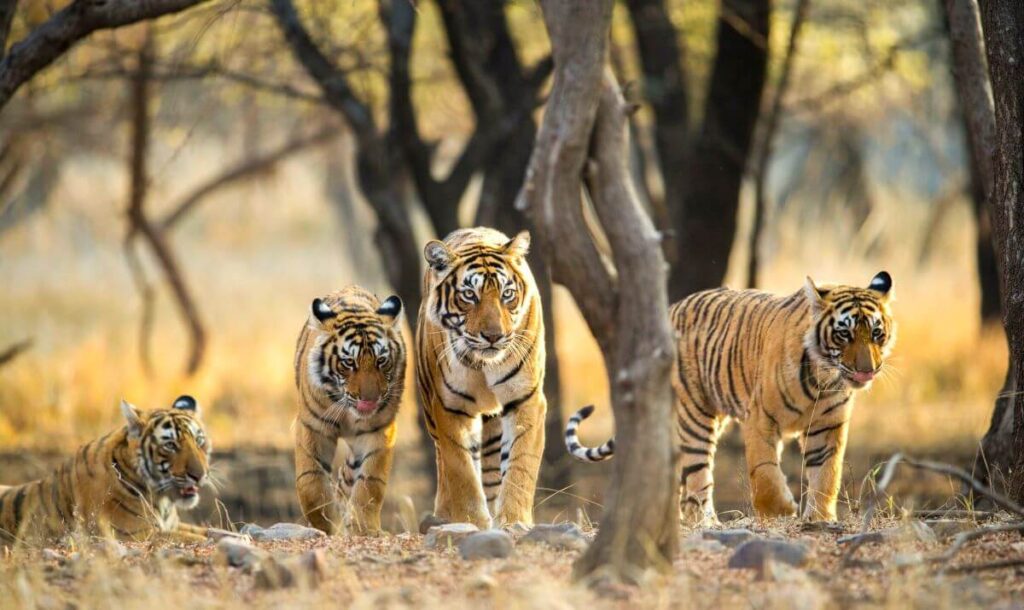
Ranthambore is where royal heritage meets wild adventure. Once the exclusive hunting grounds of the Maharajas of Jaipur, it is now one of India’s most celebrated wildlife reserves. Located in Sawai Madhopur district of Rajasthan, Ranthambore lies between the Aravalli and Vindhya hill ranges, flanked by the Banas River in the north and the Chambal River in the south.
The park’s unique landscape includes dry deciduous forests, grassy plains, rocky ridges, serene lakes, and a network of ancient temples, cenotaphs, and the iconic Ranthambore Fort. This blend of history and wilderness creates an unforgettable experience for both wildlife lovers and culture enthusiasts.
Ranthambore is especially famous for its Bengal tigers, which are often spotted roaming freely during safaris. Other species include leopards, marsh crocodiles, sloth bears, and a variety of deer and bird species, making it a photographer’s paradise.
How to Reach Ranthambore National Park
- By Air: The nearest airport is Jaipur International Airport, approx. 160 km away. Taxis and private transfers are readily available.
- By Train: Sawai Madhopur Railway Station is the closest, just 11 km from the park. It is well connected to Delhi, Mumbai, and Jaipur.
- By Road: The park is easily accessible by road. Regular buses and taxis run from major cities like Jaipur (160 km), Delhi (370 km), and Kota (115 km).
Safari Timings & Key Information – Ranthambore National Park
Ranthambore offers an exciting wildlife safari experience across 10 zones:
- Zones 1 to 5: Located in the core area of the park, these are the most popular and have higher chances of tiger sightings.
- Zones 6 to 10: Situated in the buffer area, but still offer rich wildlife experiences with fewer crowds and scenic landscapes.
Morning Safari
- 01st Nov – 31st Jan: 07:00 AM – 10:30 AM
- 1st Oct – 31st Oct and 01st Feb – 31st Mar: 06:30 AM – 10:00 AM
- 01st Apr – 16th May and 16th May – 30th June: 06:00 AM – 09:30 AM
Evening Safari
- 01st Nov – 31st Jan: 02:00 PM – 05:30 PM
- 1st Oct – 31st Oct and 01st Feb – 31st Mar: 02:30 PM – 06:00 PM
- 01st Apr – 16th May: 03:00 PM – 06:30 PM
- 16th May – 30th June: 03:30 PM – 07:00 PM
Timings may change slightly depending on daylight and weather. It’s best to confirm your safari schedule on the official park website or with your tour operator before your visit.
Kaziranga National Park, Assam

Nestled in the heart of Assam, Kaziranga National Park is a UNESCO World Heritage Site since 1985 and one of India’s most iconic wildlife destinations. Celebrating its centenary in 2005, this legendary park is world-famous for its thriving population of the rare one-horned rhinoceros, which roams freely across its lush, open grasslands.
Located on the floodplains of the Brahmaputra River, Kaziranga’s diverse terrain includes tall elephant grass, marshlands, and dense tropical forests, flanked by rolling hills and scenic tea estates. As the dry season arrives, the park reveals hidden trails, clear water channels, and open meadows—a paradise for wildlife photographers, birdwatchers, and nature lovers alike.
Apart from the rhino, Kaziranga is also home to tigers, wild elephants, swamp deer, wild buffalo, and over 500 species of birds, making it one of the richest biodiversity hotspots in India.
How to Reach Kaziranga National Park
- By Air: The nearest airport is Jorhat Airport, around 97 km away. You can hire taxis or use pre-arranged transfers to the park.
- By Train: The closest railway station is Furkating (approx. 75 km), connected to major Assam cities like Guwahati and Dibrugarh.
- By Road: The park is well-connected via National Highway 37. Regular buses and taxis are available from Guwahati (220 km), Tezpur (75 km), and other regional hubs.
Safari Timings & Important Details – Kaziranga National Park
Kaziranga offers a rich safari experience through its four main tourism zones, each known for distinct landscapes and wildlife sightings:
Safari Zones
- Central Range – Kohora: Most popular zone; best for spotting one-horned rhinos and elephants.
- Western Range – Bagori: Great for rhino sightings and chances of tiger encounters; known for scenic grasslands.
- Eastern Range – Agaratoli: Ideal for birdwatchers; located near the Brahmaputra River with dense forests.
- Burapahar Range – Ghorakati: Hilly terrain; great for elephant sightings and forest walks.
Safari Timings
- Morning Safari: 07:30 AM – 10:00 AM
- Evening Safari: 01:30 PM – 03:00 PM
Safari timings may vary slightly depending on weather and forest department regulations. Advance booking is recommended, especially during peak season (Nov – April).
Gir National Park, Gujarat
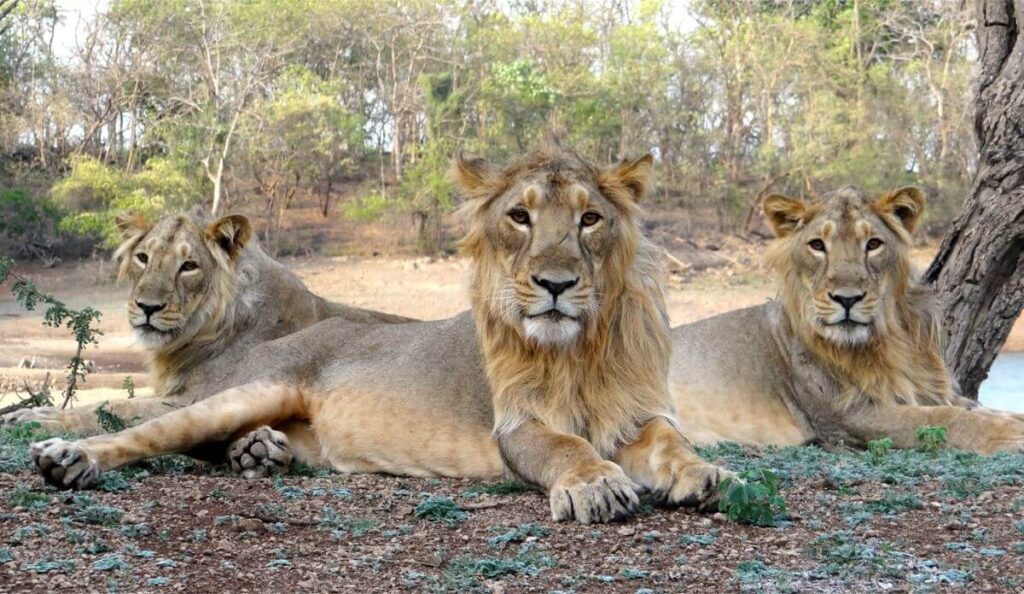
Gir Forest National Park & Wildlife Sanctuary is a one-of-a-kind conservation success story — the only place on Earth where you can witness the majestic Asiatic Lions in their natural habitat. Spread over 1,412 sq. km, Gir’s rugged terrain of dry deciduous forests, scrublands, rocky hills, and grasslands offers the perfect environment for these big cats to thrive.
Home to over 2,300 species of wildlife, including leopards, jackals, hyenas, crocodiles, and more than 300 species of birds, Gir showcases an exceptional ecosystem. The park’s lion population, once nearing extinction in the early 1900s, has made a remarkable comeback — a true symbol of successful conservation in India.
A safari here is not just about spotting lions — it’s about witnessing resilience, balance, and biodiversity in a raw and captivating setting.
How to Reach Gir National Park
Reaching Gir is convenient from various parts of Gujarat and nearby regions, thanks to well-connected air, rail, and road networks.
- By Air:
- Keshod Airport – Approx. 70 km from the park
- Diu Airport – Approx. 90 km, offers good connectivity and is ideal for tourists from Mumbai
- Rajkot Airport – Approx. 160 km, connects with major cities across India
- By Train:
- The nearest railway station is Junagadh Junction, located about 65 km away.
- From Junagadh, taxis and buses are easily available to reach the park.
- By Road:
- Gir is well-connected by road to Junagadh, Rajkot, Somnath, Veraval, and Diu.
- Regular bus services, private taxis, and self-drive options are available from nearby cities and towns.
Safari Timings & Important Details – Gir National Park
Gir Jungle Safari is closed annually from 16th June to 15th October for the park’s monsoon rest period. To visit during the open season, advance booking is essential.
- Permits must be reserved online through the official Gir National Park permit website.
- Permits are limited and highly sought after, often selling out months in advance, so plan early!
Safari Timings
| Season | Morning Safari | Evening Safari |
|---|---|---|
| 16th Oct – 28/29th Feb | 06:45 AM – 09:45 AM | 03:00 PM – 06:00 PM |
| 1st Mar – 15th Jun | 06:00 AM – 09:00 AM | 04:00 PM – 06:00 PM |
Tips for Planning Your Wildlife Safari
- Get a valid entry permit before entering the park.
- Always take an official guide along with your vehicle for a safer and more informative experience.
- Book your safari online well in advance — at least 90 days early, especially for weekends and peak season (December to February), as these dates fill up quickly. Weekdays tend to be less crowded and easier to book.
- Morning safaris are usually better than evening ones. Cooler temperatures, better lighting, and more active animals make early safaris ideal. If possible, book both morning and evening slots for a higher chance of wildlife sightings.
- Each park has different zones offering unique wildlife experiences. Premium zones like Tala in Bandhavgarh, Bijrani in Corbett, and Zones 1–5 in Ranthambore offer better chances to spot animals but are usually more expensive.
- Keep noise to a minimum. Avoid shouting or making loud sounds to not disturb the animals.
- Never throw garbage inside the park. Carry your waste out with you and dispose of it properly.
- Stay calm and behave quietly. A peaceful environment helps you enjoy the wildlife and increases your chances of sightings.
- Remember, wildlife sightings can never be guaranteed since the park is one big natural forest. Check recent sighting updates and consider going on multiple safaris to improve your chances.
- Plan your budget wisely, including hotel stays, multiple safaris, guide tips, and any unexpected expenses.
- Hire an experienced guide and driver. Their knowledge and skills greatly enhance your safari experience and wildlife spotting.
- Keep a safe distance from animals and always follow your guide’s instructions.
- Pack essentials like a camera with a zoom lens, binoculars, power banks, neutral-colored clothes, mosquito repellent, and sturdy shoes. Avoid bright clothes and strong perfumes as they can disturb wildlife.
- Be patient and stay calm. Great wildlife photos and sightings often take time, so enjoy the wait!
Conclusion
The rustling leaves, the towering trees, and the unforgettable sight of a tiger or rhino roaming free — these are moments that stay with you forever. India’s national parks offer a deep connection to nature and a vivid reminder of why wildlife protection matters so much.
Whether you dream of following tiger trails in Bandhavgarh, exploring the wild history of Ranthambore, witnessing majestic elephants in Corbett, spotting rare rhinos in Kaziranga, or encountering lions in Gir, your jungle adventure will be nothing short of extraordinary.
FAQ on the Best National Parks in India
The ideal time is generally from October to June. Peak wildlife sightings often occur between November and February when animals gather near water sources.
Yes, a valid entry permit is mandatory for all major national parks. Permits can usually be booked online in advance, especially during peak season.
Most parks operate from October to June, while some zones remain open year-round. Certain parks close during the monsoon (June to September) for safety and wildlife breeding.
Yes, online booking is highly recommended for popular parks to secure your spot, especially during peak seasons and weekends.
Safaris are typically conducted in jeeps or canters (larger vehicles). Elephant rides are available in select parks like Bandhavgarh.
You can spot Bengal tigers, Asiatic lions, one-horned rhinos, elephants, leopards, sloth bears, and a variety of bird species.
Yes, having an official guide enhances your experience and increases your chances of spotting wildlife safely.
Stay quiet, follow your guide’s instructions, do not feed or approach animals, and avoid littering.
Bring neutral-colored clothing, a camera with zoom lens, binoculars, mosquito repellent, sturdy shoes, and power banks.
Yes, many parks welcome families. However, it’s best to check age restrictions and park rules before planning.

